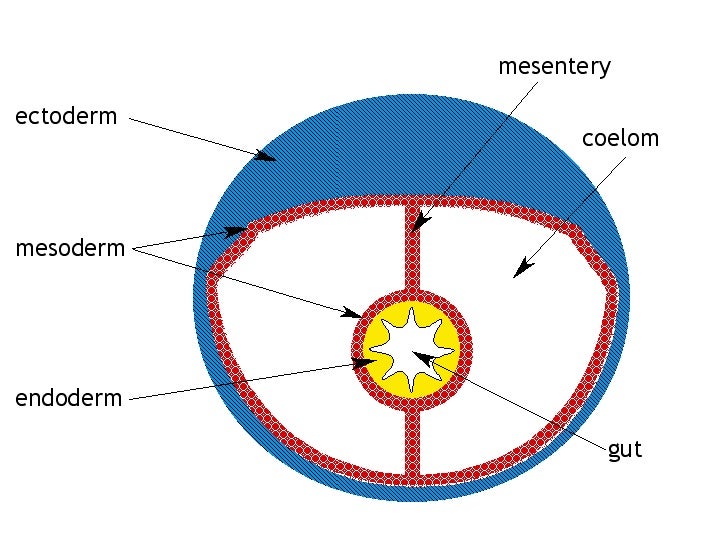Important kinds of body cavity or coelom are given below:
Body cavity or coelom can be defined as a large fluid filled space lying between the body wall and the gut wall.
It arises by splitting of embryonic mesoderm and contains most of the visceral organs. It is of two kinds.
ADVERTISEMENTS:
1. Primary coelom:
It is also called a false coelom or pseudocoelom and represents persistent blastocoel. Internal organs remain free in it; they are not bound by peritonium or mesoderm.
It is a space, bounded by ectoderm on the outside and endoderm on the inside, and not lined by mesoderm on both sides. Such a pseudocoelom occurs in many worms like animals including rotifers and roundworms etc.
ADVERTISEMENTS:
2. Secondary coelom:
In more highly developed bilateria, the blastocoel is gradually obliterated by the archenteron. Secondarily a new cavity or true coelom develops within the embryonic mesoderm and is lined outside by somatic mesoderm and on inner side by splenchnic mesoderm (Peritonium).
Peritonium also surrounds the internal organs of the body. A true coelom probably appeared for the first time in annelids. It is of two kinds on the basis of origin :
(a) Schizocoelic coelom:
ADVERTISEMENTS:
This kind of coelom arises by splitting of endomesodermal bands which originate from blastoporal region of larva and extend between ectoderm and mesoderm.
This kind of coelom is called schizocoel.
Examples are most of the protostomia (Annelida, Arthropoda, Mollusca etc.)
(b) Mesenchymal coelom:
It is seen only in phoronida, in which mesenchymal cells rearrange to enclose a space or coelom, which is regarded as an aberrant schizocoel.
(c) Enterocoelic coelom:
From larval archenteron mesodermal pouches arise, which fuse together and later on give rise to enterocoelic coelom.
This coelom expands in between the gut and body wall.
Example:
Chaetognatha, Echinodermata, Hemichordata, Chordata and Brachiopoda.
Modifications of coelom:
There are several modifications of coelom found in different animals. In Aschelminthes it is found in the form of a pseudocoelom not lined with mesoderm.
In Arthropods it is formed by fusion of several scattered spaces, collectively known as haemocoel, in which blood circulates. In annelids coelom is divided by septa into chambers corresponding to the somites.

